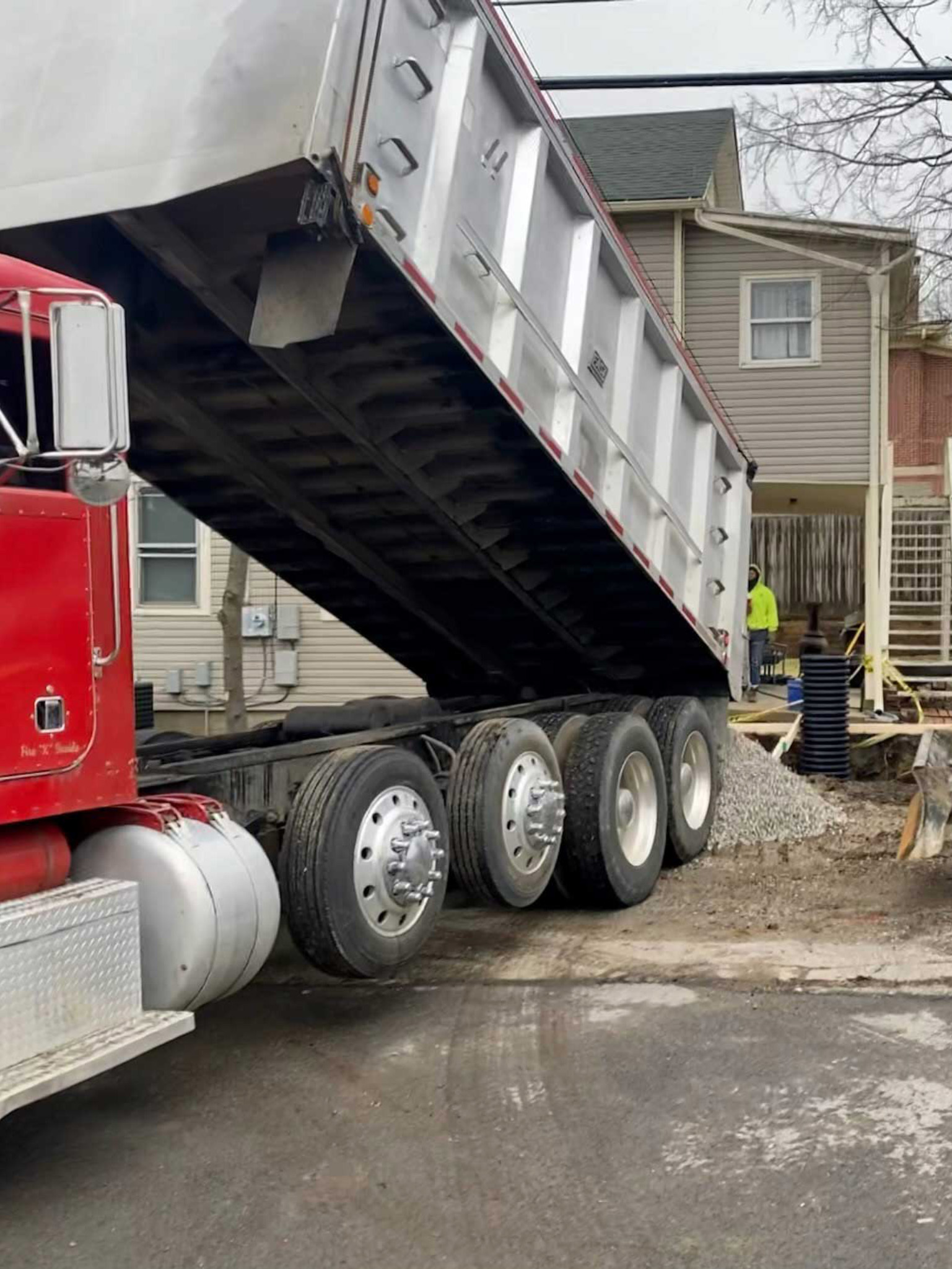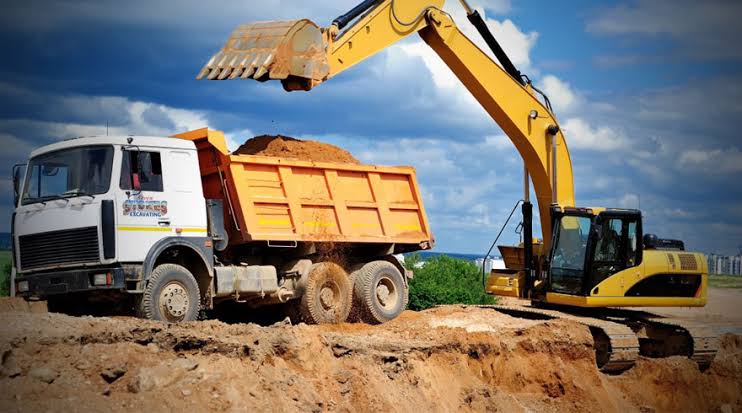Industrial Lancaster Trenching - Trenching Solutions for Services in Lancaster
Industrial Lancaster Trenching - Trenching Solutions for Services in Lancaster
Blog Article
In-Depth Expedition: The Science Behind Superior Excavation Practices
The realm of excavation techniques is a domain where science intertwines with craftsmanship to unearth the mysteries hidden beneath the earth's surface area. From old hand devices to modern-day hydraulic excavators, the advancement of excavation techniques has actually been a testimony to human ingenuity and technical advancements. What absolutely establishes superior excavation practices apart is a deep understanding of geological principles, coupled with the utilization of sophisticated tools and methods. By checking out the science behind these techniques, we can uncover the keys that lie underneath our feet and appreciate the precision and proficiency that enter into every dig.
Advancement of Excavation Methods
Throughout history, the advancement of excavation strategies has played an important role in progressing building methods and historical explorations. From the simple tools made use of by our ancestors to the sophisticated equipment utilized in modern times, the development of excavation techniques has significantly changed how we come close to various tasks.
In ancient times, manual work with standard tools such as shovels, wheelbarrows, and pickaxes was the key method of excavation. This labor-intensive procedure limited the depth and extent of excavations, usually resulting in slow-moving progress and limited accessibility to certain sites. As worlds progressed, so did the devices and strategies utilized for excavation.
The Industrial Change noted a turning factor in excavation practices with the introduction of steam-powered machinery. In contemporary times, modern technology plays an essential function in excavation, with developments like GPS systems, drones, and 3D scanning improving accuracy and performance in the area.
Role of Innovation in Excavation

The assimilation of innovative technology has actually fundamentally reinvented the field of excavation, enhancing precision and performance to unmatched levels. One of the vital technological developments that has actually substantially affected excavation practices is the application of GPS systems. These systems allow for specific mapping of excavation websites, making it possible for operators to properly find underground energies and structures. In addition, using telematics in excavation equipment has actually allowed real-time tracking of machine efficiency, resulting in aggressive upkeep and boosted operational productivity.
In addition, the development of 3D modeling and simulation software application has structured the preparation process for excavation projects. Drivers and engineers can currently visualize the entire excavation process before beginning, maximizing and determining prospective obstacles workflow. Along with this, the implementation of drones in excavation activities has assisted in airborne surveys, volumetric measurements, and site assessments with unparalleled speed and accuracy.
Geological Principles in Excavation
An understanding of geological principles is vital for making certain the architectural honesty and security of excavation sites. Geological aspects play an essential role in identifying the expediency and security of excavation jobs (septic ohio). One essential geological concept to take into consideration is the kind sites of dirt or rock existing at the site. Different soil types, such as clay, crushed rock, or sand, have varying degrees of stability and call for different excavation techniques. Natural dirts like clay may require added assistance to stop collapses, while sandy soils may be prone to erosion throughout excavation.
By performing extensive geological studies and analysis, excavators and engineers can establish strategies to minimize dangers and ensure the effective completion of excavation jobs. Inevitably, integrating geological concepts into excavation practices is vital for achieving risk-free, efficient, and sustainable results.

Most Current Tools for Excavation
In the world of excavation methods, modern developments in tools have actually changed the performance and precision of excavation processes. Among the most up to date devices making waves in the market is the usage of drones furnished with innovative imaging technology. These drones can offer comprehensive Read More Here aerial studies of excavation sites, offering real-time data on topography and potential threats. This info help in better planning and decision-making throughout the excavation process.
An additional cutting-edge tool acquiring appeal is the implementation of 3D printing modern technology for producing customized excavation tools. This enables the production of specialized devices that are tailored to the specific needs of a task, enhancing performance and reducing downtime.
In addition, developments in materials scientific research have led to the advancement of more powerful and a lot more durable excavation devices. septic ohio. Tungsten carbide-tipped excavator accessories, as an example, offer remarkable efficiency in challenging ground conditions, enhancing efficiency on-site
Scientific research's Impact on Excavation Practices

Additionally, scientific study on soil auto mechanics and geotechnical design has offered beneficial insights right into soil habits, permitting excavation specialists to make informed decisions concerning excavation techniques and soil stabilization methods. On the click here to read whole, science proceeds to drive innovation and renovation in excavation practices, making excavation projects much more reliable, economical, and sustainable.

Verdict
Finally, the evolution of excavation methods has actually been considerably affected by developments in technology and a much deeper understanding of geological principles. The most up to date tools and tools made use of in excavation have improved performance and accuracy in the field. The application of scientific expertise has considerably improved excavation methods, causing much more sustainable and efficient methods for digging deep into various kinds of materials.
In the world of excavation practices, contemporary technologies in devices have transformed the performance and accuracy of excavation procedures. By leveraging scientific principles, the excavation sector has actually been able to considerably enhance effectiveness, accuracy, and safety in excavation procedures. GPR permits excavation teams to non-invasively scan and map subsurface frameworks, energies, and potential hazards, allowing them to intend excavation projects with higher accuracy and reduced danger of accidents.
In addition, scientific research on dirt auto mechanics and geotechnical engineering has actually supplied important understandings right into soil actions, enabling excavation professionals to make informed choices relating to excavation approaches and soil stabilization methods. On the whole, scientific research continues to drive technology and enhancement in excavation methods, making excavation projects much more efficient, cost-efficient, and sustainable.
Report this page